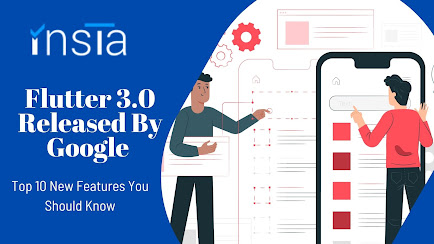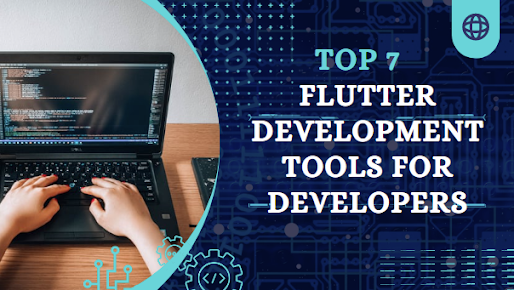Flutter 3.0 Released By Google: Top 10 New Features You Should Know
Flutter 3.0 was introduced by Google during the recently finished Google I/O 2022 event to allow flutter mobile app development company to create better, more powerful mobile apps.
The current version of Flutter has made quite a stir within the developer community, with the latest, new features being included in this version of Flutter being the talking point.
We'll go through the top ten new and interesting features of Flutter 3.0 that the flutter mobile app development companies should be aware of in this article.
How Did Flutter 3.0 Come To Be?
Since Flutter 1.0 was released four years ago, Google has been improving and adding new capabilities to the platform in order to give mobile app development company a better experience while creating new apps.
Google improved the iOS user experience by adding additional developer tools and Metal support in subsequent versions of Flutter 1.0.
Google introduced features including Native Platform views, Sound null safety by default, online support, and a desktop preview to Flutter 2.0.
Material You, the next generation of Material design, was added to subsequent versions of 2.0, such as 2.5.
Flutter 3.0 is now available, with even better and more powerful development tools for delivering a wonderful user experience.
Flutter 3.0's Top 10 Highlights
Support For Firebase
Flutter App Development company may use Firebase as a Backend-As-A-Service to get hosted backend features including Cloud storage, real-time databases, crash reporting, and more. Google has now integrated the source code and documentation into the core Firebase offering, which is the main Firebase repository and site, giving Flutter App Development services for building richer and more feature-rich mobile apps. Google is also working on a set of Flutter plugins to make using Firebase easier.
Toolkit For Flutter Casual Games
Google unveiled the Casual Games Toolkit with Flutter 3.0, allowing Dedicated Flutter App Developers to create and publish casual games from the ground up.
Flutter app developers will be able to integrate several new and exciting features via this games toolkit now that it is open-source, and with integration-ready features (in-app purchases, play services, Firebase, and more) and a single codebase, developers will be able to create new games using the Flutter platform seamlessly.
Creating future-ready games on Flutter has gotten more interesting and effortless now that Flutter supports hardware-accelerated visuals.
Support For macOS and Linux
Developers may now create apps for macOS and Linux operating systems using Flutter 3.0. Flutter initially supported Android and iOS platforms, but it was later expanded to include Windows, Web, and embedded devices.
Flutter's scope and reach have now been broadened with the addition of macOS and Linux support.
Dart 2.17
Flutter 3.0 introduces a second version to the Dart SDK. All Flutter app developers (and even those who don't use Flutter!) will now have access to the latest Dart language: 2.17.
Leveraging enums and override as default methods, deploying and testing custom-written classes, using API sample code, and more are among the new features in Dart 2.17.
Support For Foldable Phones
Flutter 3.0 will now allow programming for foldable devices and phones, thanks to a partnership with Microsoft. The MediaQuery class may now be used by Flutter App Development companies to apply DisplayFeatures rules, which include information on device features such as hinges, folds, cutouts, and more.
Support For iOS Variable Refresh Rates
Flutter 3.0 upgrades have brought some interesting developments for iOS-based mobile apps. Developers will now be allowed to use variable refresh rates on iOS devices, particularly those with a ProMotion display, as well as the iPhone 13 Pro and iPad Pro.
With this upgrade, iOS mobile apps built on Flutter will be able to support 120 Hz refresh rates on certain devices, up from 60Hz before.
iOS Releases Made Simple
With Flutter 3.0, releasing to iOS has never been easier or more smooth.
Developers may publish iOS versions immediately without opening X-code using the IPA command (flutter build IPA —-export-method ad-hoc / development/enterprise).
The Cycle Of A Web App
Webapp Lifecycle: New in Flutter 3.0 When a Flutter app is hosted on an HTML page, the new Lifecycle API for web apps gives developers additional flexibility and control over the bootstrap process.
Furthermore, Lighthouse can now assess the app's performance in real-time and give useful feedback as needed.
Decoding of Images
The Flutter web version has received a significant overhaul.
With the release of Flutter 3.0, the Flutter Web interface will be able to detect and install image coder API directly from the browser.
Flutter web will be able to decode pictures asynchronously using the browser's built-in image codecs, resulting in a 2X increase in image loading time.
Essential Improvements
A number of core aspects and functionality inside Flutter have been upgraded and expanded with Flutter 3.0, in addition to these upgrades.
The latest version of Flutter now supports Material Design 3, making mobile app UIs more polished, intuitive, and user-friendly.
Flutter 3.0 is now entirely native to Apple's M1 CPU, resulting in quicker performance and flawless compilation.
Conclusion
Look no further if you want to create a new mobile app with Flutter 3.0's incredible features.
InstaIT Technilogies team includes a devoted and passionate Flutter app development company who are ready to take advantage of Flutter 3.0's new features and capabilities to provide exceptional outcomes.
To discover more about Flutter 3.0 and how our Flutter app development services may improve your business, contact us now.




Comments
Post a Comment